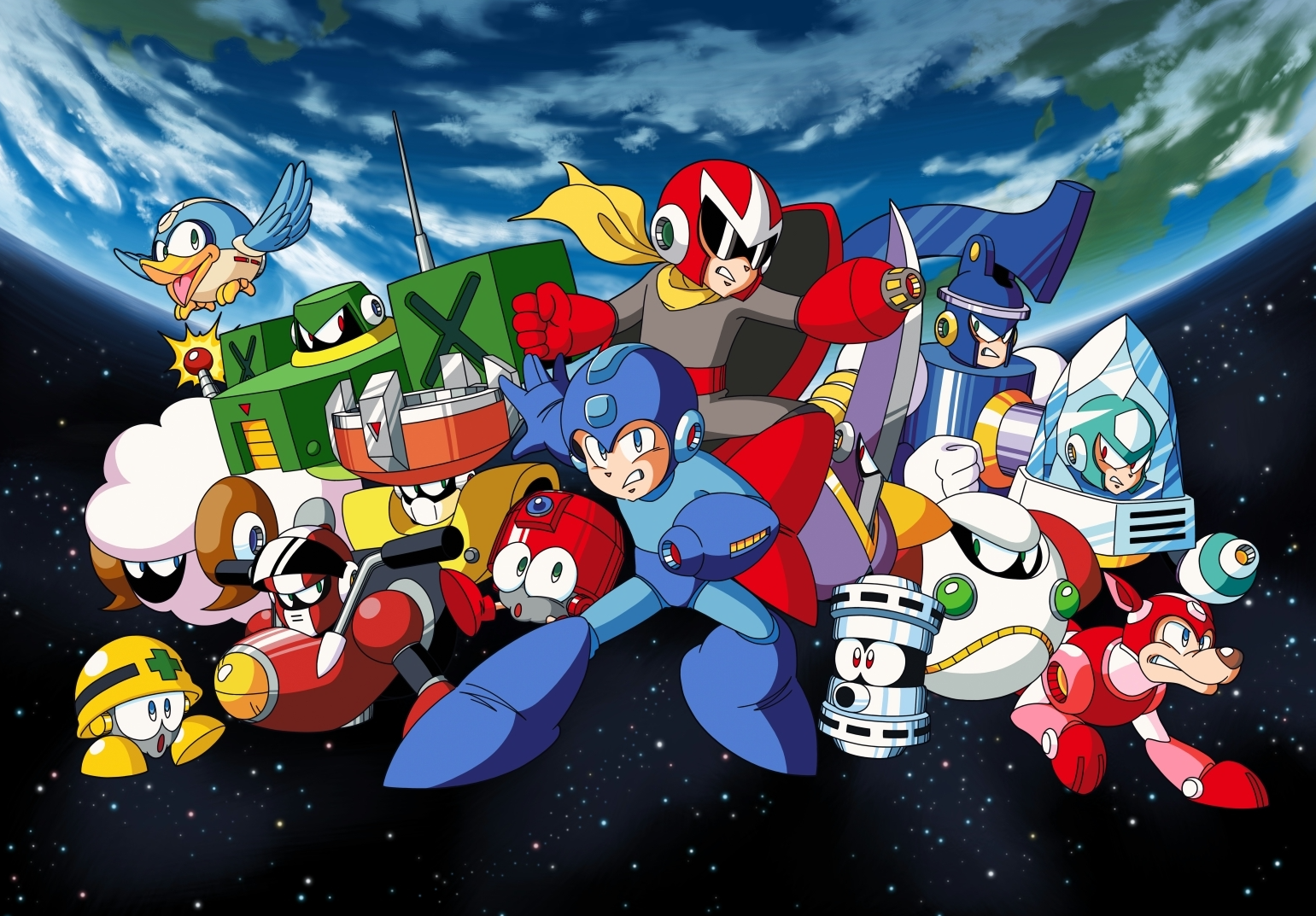The Inviting Brutality of Mega Man
Gleaning joy from intense difficulty

Mega Man X5 kicked my ass for well over thirty minutes last night. Not the entire game. Not even a boss. It was a segment of a level, a ten-second space between checkpoints in a Sigma stage, a cruel gauntlet of sadistically placed ranged enemies and walls teeming with instant-death spikes.
I died, I tried again. I died, I tried again. I died, I tried again. Over and over, ad nauseam, without relenting.
These are kid’s games, aren’t they?

Difficult, But Not Too Difficult
Despite the shine of their kitschy, anime-esque aesthetics and bright palettes of primary colors that adorn both character and stage, the Mega Man games have always been mongers of intense difficulty. Soon after graduating from Sonic the Hedgehog and Mario, I was still on the lookout for platformer experiences in my teen years. Vectorman scratched the itch for a while, being somewhat of a cousin to Mega Man in terms of sheer difficulty.
I was first introduced to Mega Man X4 on the Playstation, where my brother and I took turns being mercilessly destroyed by Sigma’s various Maverick Reploids. Despite the sheer level of difficulty present in these games, we never truly felt defeated. Losing to a boss and restarting a level again and again didn’t engender a feeling of despair but instead pushed us to discover new strategies and finally eliminate the tougher bosses.
What is it about Mega Man titles that have kept them popular for so long, in spite of — or because of — their brutal difficulty levels? Whether it’s dying to lasers or spikes, the punishments for meager slip-ups in each Mega Man title are severe. Learning stages is often more important than understanding the proper strategies for bosses, and the platforming in Mega Man titles is often extremely tight and rewarding. With the introduction of Zero and later, Axl, the gameplay variety received yet another overhaul in the Mega Man X series that continued on into Zero, and the difficulty never lessened.

Challenge Over Difficulty
Most of us can agree that there is a difference between challenge and difficulty. The challenge addressed in any game shouldn’t be reliant on luck, but skill. Overcoming challenges feels good when we are rewarded in equal measure to our struggles, and this is something that Mega Man’s simplistic design has always offered. Despite the iconic property spanning multiple series and dozens of games, the core gameplay loop has never changed. Play through a level, collect items, destroy robots, kill bosses.
What keeps Mega Man fresh is the inclusion of new mechanics and aesthetically different bosses and levels. The core tenets of the gameplay were polished over twenty years ago and have barely changed because of how well they’ve established themselves in the meta of side-scrolling platformers. Where other similar games were fashioned around collect-a-thons or simply clearing levels, Mega Man remains firmly entrenched in the loop of ultra-difficult levels that transition into a climax of an ultra-difficult boss. Rinse and repeat.
The fine line of difficulty versus challenge is of course muddied in different Mega Man titles, and while most entries in the X series handle this well, the front half surreptitiously defeats the latter half, if only by the hardiness of design. Where Mega Man truly shines for me is in the Game Boy Advance series Mega Man Zero (now available in a ludicrously affordable collection for the Switch that includes Mega Man ZX).
Where Mega Man and Mega Man X laid the groundwork for the popular gameplay loop, Mega Man Zero finally refined the series beyond both loop and difficulty, rewarding the player with an even more nonlinear approach to both level and boss. Mega Man Zero’s insistence on unique character properties and level design makes it outshine the majority of its brethren, with each game sequentially becoming better than its predecessor.

Busting Mavericks, Overcoming Failure
Deaths in Mega Man games, while frustrating, don’t quite feel like the psychological torment found in similar titles. If a stage is too difficult, most Mega Man entries allow you to back out and try a different level, where the pacing might be more friendly and allow you to find a boss weapon or sub-tank that will help you on your journey. The ability to tackle levels and bosses in any order (established at the advent of the series) makes Mega Man’s challenge accessible and customizable.
With the currently available collections, this is taken a step further, as you can back out of a game entirely to play a different one. For instance, you might find Mega Man X4 less challenging than X3. Aside from the Zero series, most Mega Man entries do not have concurrent storylines and exist purely for their joy of gameplay. Once you establish an understanding of what the franchise wants from you, almost every Mega Man game becomes more accessible and the challenge more manageable.
The recent Mega Man collections have also added accessibility options to the games, quality of life improvements such as autosave, and extra lives that really change the customization options of each entry’s difficulty. Mega Man 11, the most recent main series entry, added its amazing Double Gear system. This gave Mega Man unique abilities from the go, allowing him to speed up or slow down time and add a unique perspective to the player’s arsenal. I found this to be one of the best accessibility options added to the series via gameplay in some time, as every player can utilize these tempo options throughout the run of the game. Mega Man 11’s challenge felt so incredibly balanced that I truly have to tip my hat to Capcom’s enduring design team.
While the argument over the difficulty in video games continues to rage in its various entertaining forms, Mega Man has always felt like the ignored and accepted outlier. Mega Man fans are a unique bunch, as they’ve long enjoyed the intense challenge of these games and celebrated the series for what it has offered while also not looking down upon anyone who has needed a leg up on the Blue Bomber’s adventures.

Nearly every Mega Man entry is a gem of its own, in many ways a celebration of games that are purely fun and whose skill requirements certainly get the adrenaline flowing. Admittedly, there have been times when I’ve become too frustrated and have had to walk away, but that simply enforces the gilded click of understanding when a level or boss just gels with you and that long-awaited victory comes through clean.

Mega Man has long been reliable in this way, not just as a series but as a character — loyal, dependable, and always ready to kick your ass.
